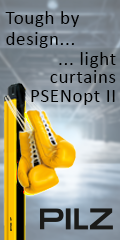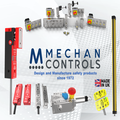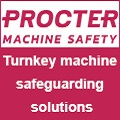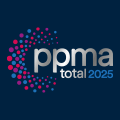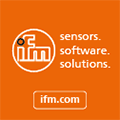
Posted to News on 6th Jan 2025, 10:31
Managing noise on the food factory floor
The Health and Safety Executive estimates that over two million people in Great Britain are exposed to unacceptable levels of noise at work, with food and drink production being amongst the biggest culprits. Many of the processes that emit the most noise happen during manufacturing, but there are ways that plant managers can reduce it, as Tom Cash, director at automation parts supplier Foxmere, explains.

The food and beverage industry is vulnerable to noise-related risks due to the sheer variety of equipment involved. Filling machines, conveyors, palletisers and refrigeration units all contribute to a constant cacophony. The same goes for the production of products like beet sugar, breakfast cereals and frozen fruits.
According to the Centers for Disease Control and Prevention (CDC), around 46 per cent of manufacturing workers have been exposed to hazardous noise. What's more, the same report highlighted that close to 14 per cent of manufacturing workers had some degree of hearing loss.
These hazards reflect how important it is for food manufacturers to adhere to legal obligations designed to protect employees and create safer working environments.
Legal requirements
In the UK, the Control of Noise at Work Regulations 2005 provides a legal framework for managing noise in the workplace. These regulations require employers to eliminate noise at its source wherever possible or reduce it to the lowest level reasonably practicable - referred to as "so far as is reasonably practicable" (SFAIRP).
According to the second edition of a guide from the Health and Safety Executive, titled 'A Recipe for Safety: Health and Safety in Food and Drink Manufacture HSG252', page 49 defines two critical exposure thresholds. At 80 decibels (dB), employers are required to inform workers about noise risks and offer hearing protection to those who request it. At 85 dB, stricter measures must be implemented, including controlling noise through quieter machinery or soundproofing.
If these options are not feasible, hearing protection zones must be established, clearly marked and enforced. In addition, health surveillance is also required for workers exposed to hazardous noise levels.
Quieter machinery
Manufacturing workers are exposed to several noises loud enough to cause noise-induced hearing loss (NIHL) and this Applied Sciences paper cites compressors, pumps, motors, fans, turbines, vents, steam leaks and control valves as some of the more significant sources of workplace noise.
However, modern automated machinery is often designed to minimise vibrations and reduce mechanical noise, improving both the working conditions for operators and the durability of the equipment.
A prime example is Clippard Spider valves, known for their exceptionally quiet operation with lower noise and vibration levels. These valves are especially effective in packaging lines, where pneumatic actuators perform tasks like bottle capping or product sorting.
Another example is Dematic's global launch of its noise reduction portfolio. These products are specifically designed to address noise in environments like packaging lines and material handling systems, all of which are sources of high noise levels on food and beverage lines.
The portfolio uses 3D noise mapping to diagnose and visualise noise levels in a facility, much like how a heatmap identifies temperature hazards, providing a clear, data-driven understanding of the acoustic challenges within the space. Dematic then recommends quieter equipment, such as rollers, slats and belt conveyors, which are designed to reduce noise levels by up to 15 dB.
Is PPE not enough?
Despite these advancements, 28 per cent of workers in manufacturing report not wearing hearing protection in noisy environments - that's according to the aforementioned CDC report. This alarming statistic reiterates the importance of integrating quieter machinery and automation systems, which address noise at its source rather than relying solely on personal protective equipment (PPE).
That's not to say PPE isn't necessary, because it is. However, automation aligns with best practice for reducing noise exposure, especially when stricter measures are required for machinery louder than 85 dB.
As food and beverage manufacturers must focus on workforce health and safety, integrating quieter automation technologies is crucial not only for meeting regulatory standards but also for enhancing operational efficiency.
Partnering with experts like Foxmere ensures that your production runs smoothly, safely and in compliance.
Want the latest machine building news straight to your inbox? Become a MachineBuilding member for free today >>



